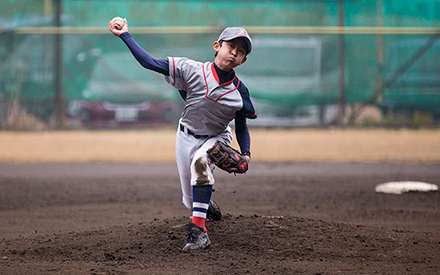
Your feet are one of your most important body parts. They get you where you want to go and help you stay healthy through physical activity. However, it's easy to take your feet for granted — until you have an injury or problem.
Foot health is important for everyone. Most of us don't think much about foot care, but preventing foot health issues can help keep your whole body healthy. Foot health is even more important for people with diabetes.
Physical therapists provide the following six tips to help you improve or maintain your foot health and your freedom to move.
1. Clean your feet daily and wear clean, dry socks.
Wash your feet daily in lukewarm water. Avoid using hot or cold water. Water that is too hot or too cold can damage your skin, especially if you have diabetes or a decreased feeling in your skin. Use a soft washcloth or sponge and gentle soap. Then, rinse and dry your feet thoroughly before putting on socks and shoes.
When our feet sweat, that sweat gets held against our skin by most socks. Socks that are bunched up or too tight around the ankles or lower leg can cause irritation or problems. People with diabetes should consider special socks with extra cushioning and sweat-drying materials.
2. Inspect your feet regularly.
Check your feet for blisters, redness, minor cuts, or cracked skin. Use a hand mirror if you can't see the bottom of your feet. If you notice any problems, contact a doctor or physical therapist. Never ignore a problem with your feet. If you have diabetes, check your feet daily.
3. Cut nails carefully and regularly.
Keep your nails trimmed, but not too short. Nails that are cut too short can cause soreness or infection. It is best to cut nails straight across and then carefully file the edges. If you cannot cut your own nails, a podiatrist can assist. If you use a nail salon, tell them to be careful not to cut your toenails too short or injure your skin during filing.
4. Always wear well-fitted shoes.
Shoes that don't fit well may cause blisters that can lead to infection or other problems. Make sure that you choose shoes that do not irritate your feet. Wear shoes that properly support your feet and ankles to ensure safety while walking.
A physical therapist can help ensure that your shoes fit properly for general wear or sports-specific activities. They also can recommend shoes or shoe inserts (orthotics) for proper support.
5. Moisturize your feet at night.
Keep your skin soft and healthy by moisturizing every night. This can help prevent itching or cracking. Avoid putting lotion between your toes.
6. Keep your blood sugar under control.
According to the National Institutes of Health, diabetes can affect your feet. High blood sugar levels can cause nerve damage, resulting in a loss of skin sensation. Reduced blood flow also can make it harder for your feet to heal from an injury or resist infection.
Regular physical activity and proper nutrition are keys to preventing type 2 diabetes and maintaining appropriate blood sugar levels. Whether you have diabetes or not, getting the recommended amount of daily physical activity is important to prevent and manage many chronic conditions and diseases.
If you need help starting a physical activity plan to improve your health and prevent chronic conditions, or if you already have diabetes, a physical therapist can help. A physical therapist can design a safe and effective exercise program and treatment plan specific to your needs and goals and help you manage diabetes-related issues affecting your feet and overall health.
Physical therapists are movement experts who help people with foot problems improve their quality of life through hands-on care, patient education, and prescribed movement. They also can help people with diabetes improve their strength, balance, and endurance and maintain good skin health.
You can contact a physical therapist directly for an evaluation. To find a physical therapist in your area, visit Find a PT.


